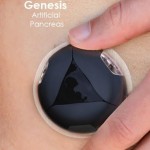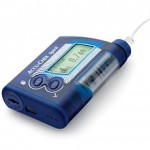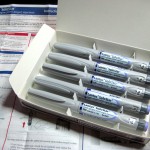Insulin Nation – Should You Go to a Diabetes Psychologist?

f you have diabetes and you’re struggling, how do you know if you should get help? When someone asks me this, there a couple of things I encourage them to ask themselves.

f you have diabetes and you’re struggling, how do you know if you should get help? When someone asks me this, there a couple of things I encourage them to ask themselves.

For years, we have known that diets high in salt can be bad for people with high blood pressure. A study published recently in The New England Journal of Medicine confirmed this fact. It monitored more than 100,000 people in 18 countries and found that people who consumed more sodium generally had significantly higher blood […]

So what is the deal with coconut oil then? Well, while it’s high in saturated fat, we know that not all saturated fats are created equal — and this is where some of the believed health benefits of coconut oil come into play.

At Keystone 2014, we heard from diabetes expert (and fellow type 1!) Dr. Irl Hirsch on optimizing diabetes management on a budget. To cut costs, he suggested that patients consider buying generic brands; buying from bulk suppliers for discount deals; looking for different prices at local pharmacies; using companies’ financial assistance programs; reconsidering the type […]

Remember that little circular, three-wedge closed-loop device known as Pancreum? You know, the Artificial Pancreas system in which you pop in wedges for insulin pumping, CGM (continuous glucose monitoring), and glucagon pumping, all around a little central core controller?

Diabetic peripheral neuropathy, which occurs in about half of all patients with type 2 diabetes, is underdiagnosed, and this is partly because physicians aren”t able to offer anything to treat the underlying cause of this condition, and the current treatments provided to these patients only treat the pain.

The U.S. Food and Drug Administration has approved a new test that may help doctors diagnose type 1 diabetes, the most common form diagnosed in children and adolescents.

Scientists from the American Diabetes Association (ADA) held an open Twitter chat to discuss new guidelines for children with Type 1 diabetes, as part of the rollout of the association’s first Type 1-only position paper. Endocrinologists Dr. Jane Chiang and Dr. Sue Kirkman fielded questions for the ADA.

Approximately two out of every five Americans will develop type 2 diabetes at some point during their adult lives, according to new U.S. government estimates.

All Dr. Christopher Jacobs’ friend wanted a lancing device that didn’t cause pain. And after hearing the longtime type 1 diabetic lament the discomfort he felt from the many finger pricks required to test his blood glucose levels, Jacobs was intrigued by the challenge.

The researchers have developed a prototype laser-based system to allow sufferers of diabetes to check their blood sugar levels without using a needle stick to draw blood. The system works by directing a laser beam at the patient’s palm and measuring the amount of absorption and scattering when the laser interacts with dermal interstitial fluid, […]

One of the basic premises of wearing an insulin pump is flawed, at least in my experience. And that’s the promise that a pump somehow reduces the presence of diabetes in your life, or transforms it into a mere inconvenience.

The less money you have, the more likely you are to have diabetes and other conditions. Studies find that giving people money improves their health. Why is that, and what can we do with that information? A Canadian study found that living in poverty can double or even triple the chances of developing diabetes.

For most of us with diabetes, diabetes cure research can feel like it’s moving at a glacial pace. If you’re a mouse, it’s probably pretty exciting, considering researchers are discovering new ways to cure you almost every day. But what progress is being made in curing this disease? Is anyone moving beyond the lab rats […]

Interval training, also called burst training, doesn’t necessarily have to be extremely taxing in order to offer health benefits for diabetics, according to a new study.

The FreeStyle Libre has a small sensor around an inch in diameter that can be stuck onto the skin, such as onto the back of your upper arm. Readings are taken by swiping the reader over the patch. Readings can be taken as often as you like and will automatically take glucose readings once every […]

The U.S. Food and Drug Administration (FDA) today granted tentative approval for Basaglar(TM) (insulin glargine injection), which is indicated to improve glycemic control in adults with type 2 diabetes and in combination with mealtime insulin in adults and pediatric patients with type 1 diabetes.

For patients with impaired glucose tolerance or early diabetes, use of insulin glargine (Lantus) was the best predictor of maintaining a lower hemoglobin A1c (HbA1c) level over 5 years, according to a subanalysis of the ORIGIN trial.

Researchers examined the effects on blood pressure (BP), heart rate (HR), and blood glucose (BG) associated with the intake of caffeine in comparison to maltodextrin (CHO) during prolonged periods of low-intensity exercise in patients with type 2 diabetes.

With regular sugar taking a nutritional beating and artificial sweeteners unable to shake their sketchy made-in-the-lab connotations, it’s no wonder newcomers like stevia and agave are conquering our morning coffee (and the world of packaged foods).